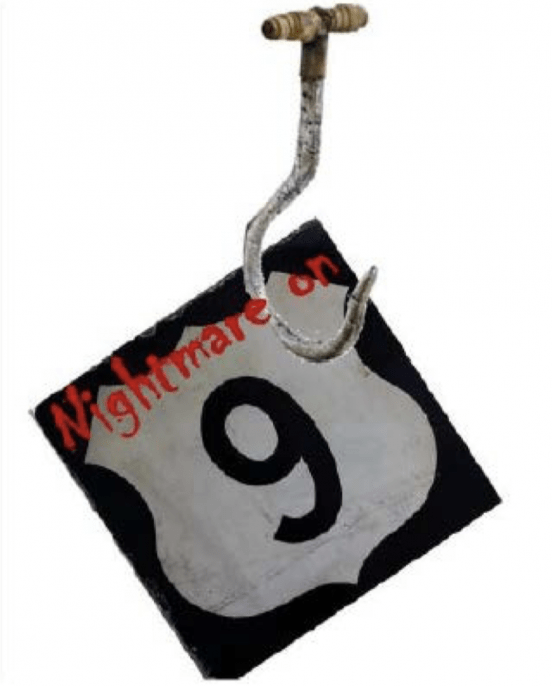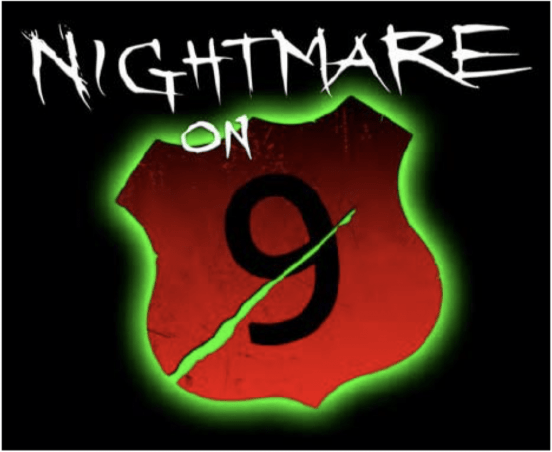Joint Operation of a Business Leads to a Nightmare of a Case
It’s fun to blog about well-publicized cases, like the recent Stairway to Heaven decision. But I pay much more attention to quotidian IP cases like this one involving a haunted house on Washington State Route 9 near Seattle. Not only are they much more like the cases I actually litigate, but they hold many more lessons for how to avoid sticky legal problems.
Jointed and Gutted
The essential problem in this case is this: The parties jointly operated the haunted house without a clear idea who was responsible for what. It’s the word “jointly” that should make you shudder. The plaintiff, Seattlehaunts, claims it was solely in charge of operations, and it just leased the defendant’s property, which we’ll just call the “Farm.” The parties did eventually enter into an agreement whereby Seattlehaunts leased the Farm in exchange for 25% of the proceeds. But, as we’ll see, that didn’t solve the problems that were brewing between the parties.
The parties called their haunted out NIGHTMARE ON 9. The Farm developed a graphic to help promote the haunted house:

The “Hook Logo”
But Seattlehaunts had an artist develop a different graphic to help promote the haunted out:

The “Red Logo”
Although Seattlehaunts commissioned the artist, the Farm actually paid him. I bring this up because it doesn’t matter one tiny bit.
Anyway, you can see, both graphics incorporate a U.S. 9 sign. Which is odd because U.S. 9 is nowhere near Washington State. The road in question is Washington State Route 9, whose signage should look like a “9” inside a silhouette of George Washington’s head, which, admittedly, would be too visceral even for a haunted house. The parties jointly used the new Red Graphic to promote the haunted house.
Who “Owns” the Logo, Take 1
Keep your eye on the ball. Who owns the copyright in the Red Graphic, Seattlehaunts (which commissioned the work) or the Farm (which paid for it)? Trick question! Neither. The artist continued to own the copyright because whatever agreement Seattlehaunts entered into didn’t include an assignment of the copyright. What’s more, it didn’t matter who did the paying or the commissioning. In a situation like this (where the creator isn’t an employee), the copyright nearly always remains with the creator, unless and until he or she assigns it away. Mere payment or commissioning doesn’t automatically cause the assignment: the artist must affirmatively assign the copyright in a signed writing.
As a dispute between the parties started to grow, Seattlehaunts astutely purchased the copyright in the Red Graphic from the artist. So, that settles that: Seattlehaunts owns the copyright in the Red Graphic.1The Farm contends it owns the copyright to the Red Logo because it owns the copyright to the Hook Logo, and the Red Logo was based on the Hook Logo. Even if this all were true, the artist would still own all new elements that he added to the Hook Logo to make the Red Logo, which, in this case, is roughly everything that’s protectable in the Red Logo. The U.S. 9 sign and short phrase NIGHTMARE ON 9 are not protectable, the former being in the public domain and the latter being too short.
An IP Impasse: Copyright and Trademark Are Different
Back to the main narrative. For years, the haunted house operated at the Farm under the lease agreement. But in 2019, the Farm booted Seattlehaunts, with the intention of running the NIGHTMARE ON 9 haunted house itself. Undeterred, Seattlehaunts told the public that NIGHTMARE ON 9 will no longer be at the Farm, but it will operate NIGHTMARE ON 9 at a new location in 2021 (with 2020’s version being cancelled for pandemic-based reasons). Both parties used the Red Graphic to promote their competing versions of the NIGHTMARE ON 9 haunted house: Seattlehaunts’ version, and the Farms’ version. Note that the Farm no longer uses the graphic, which is interesting, but it does claim NIGHTMARE ON 9 “is owned and trademarked” by the Farm.
So both the Farm and Seattlehaunts operate competing haunted houses, both under the name NIGHTMARE ON 9. And so what we’ve got ourselves here is a horrible trademark ownership dispute, complicated by copyright.
It is quite possible that one party owns the copyright in the Red Logo but the other owns the trademark rights in it. If this were the case, then neither party could use it!2Strictly speaking, the copyright owner could use it, provided it wasn’t for haunted-house services, but that would be silly.
How can this be, since it’s the same logo? It’s because copyright and trademark protect very different rights. Copyright protects expression. Trademark protects “goodwill,” which might be described as the relationship between a provider of goods or services and the consuming public (which doesn’t necessarily even have to be “good”).
Put in terms of the Red Logo, copyright protects what makes the Red Logo cool, creepy, or artistic (for a certain value of “artistic”).3The fact that copyright protects the Red Logo should also make clear that copyright doesn’t protect just “high art.” By no means. Trademark protects the message conveyed by the Red Logo that the haunted house will be a scary, exciting or worthwhile experience not provided by other purveyors of haunted houses. This is why the copyright in the Red Logo arose immediately when the artist designed it4And fixed it in a “tangible medium.” By contrast, the trademark rights in the Red Logo arose only after it has been used to identify and promote the haunted house for a while. Until it’s used in commerce in this way, you don’t even know whether the Red Logo has anything to do with haunted houses, let alone whether it suggests that the haunted house experience being offered is worth your hard-earned cash.
To be clear, this double duty is highly unusual (though, obviously, not impossible) and usually can only arise in the context of fairly detailed logos. Most trademarks are too short or simple to be subject to copyright. If you looked at just the words NIGHTMARE ON 9 from the logo, the phrase by itself wouldn’t be subject to copyright. It’s not original enough. To give someone copyright to something means it applies against all comers, in all contexts, not just in the context of haunted houses. If you gave someone a copyright on just the words “Nightmare on 9,” no one else could use those words in a fixed media or in a public performance. If you lived back East and got stuck on the real U.S. 9 and texted your spouse that you were experiencing a “nightmare on 9,” you’d be infringing copyright. And that would be stupid, so we don’t allow copyright on short phrases like that.
Who Owns the Logo, Take 2
OK, but we haven’t resolved the main issue: who owns the trademark rights in the Red Logo? This is a really hard question to answer. Remember that a trademark protects a relationship between between consumers and… who, exactly? Not whoever came up with the trademark. Consumers don’t know or care about that. Consumers care about whoever is providing the goods and services—or, more precisely, whoever is taking responsibility for the quality of those goods and services (which isn’t necessarily the same as the one providing the goods and services). They don’t need to know that company’s name or anything. Just whoever it is that’s responsible for the quality of the goods and services. In the jargon, this is known as the “source indicator.” (Yeah, I know.)
As between Seattlehaunts and the Farm, who would the public look to as responsible for the quality of the haunted-house experience? Seattlehaunts might have operated the haunted out, but it took place at the Farm. When you drove up to the haunted house, I believe you would’ve seen signage indicating who owned the Farm. Might not the public believe the Farm was controlling the quality of the haunted house and had merely hired Seattlehaunts to operate it for them? Or did the public think Seattlehaunts was in control, and the haunted house just happened to be on the Farm? I think the court will need a lot of evidence to figure this one out.
What about the lease agreement? Doesn’t that make it clear who was in control? No, it doesn’t! At least, not for trademark purposes. Consumers know nothing about the lease agreement. They just know what they see and hear when they visit, and what they see and hear when they encounter promotional materials.
It’s the Feds!
A final note. There are actually two lawsuits. The Farm sued Seattlehaunts for trademark infringement in state court, then Seattlehaunts sued the Farm for copyright infringement. You might think this is inefficient. Alas, it’s unavoidable. Copyright claims can only be brought in federal court (which makes them unusual—normally, you can bring federal claims in state court, if you want). But the Farm filed in state court and apparently avoided bringing any federal claims, so I couldn’t be “removed” to federal court. So Seattlehaunts had no choice but to file a separate lawsuit in federal court to vindicate its copyright.
Thanks for reading!
Footnotes
| ↑1 | The Farm contends it owns the copyright to the Red Logo because it owns the copyright to the Hook Logo, and the Red Logo was based on the Hook Logo. Even if this all were true, the artist would still own all new elements that he added to the Hook Logo to make the Red Logo, which, in this case, is roughly everything that’s protectable in the Red Logo. The U.S. 9 sign and short phrase NIGHTMARE ON 9 are not protectable, the former being in the public domain and the latter being too short. |
|---|---|
| ↑2 | Strictly speaking, the copyright owner could use it, provided it wasn’t for haunted-house services, but that would be silly. |
| ↑3 | The fact that copyright protects the Red Logo should also make clear that copyright doesn’t protect just “high art.” By no means. |
| ↑4 | And fixed it in a “tangible medium.” |

